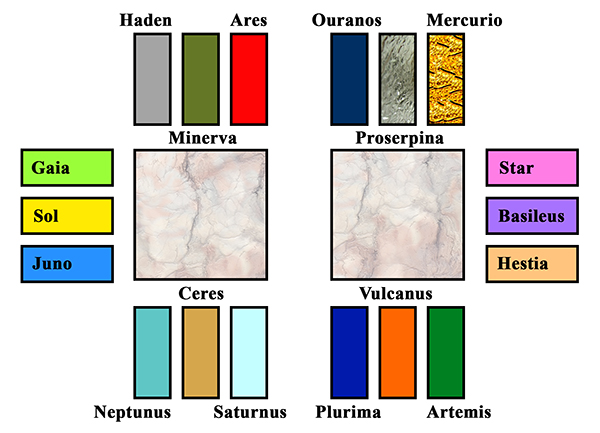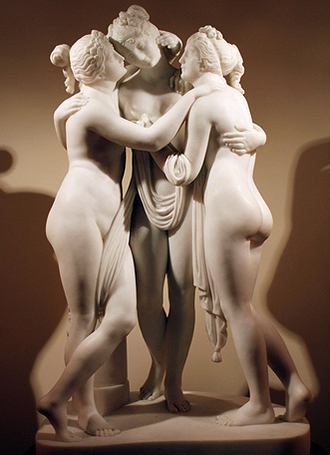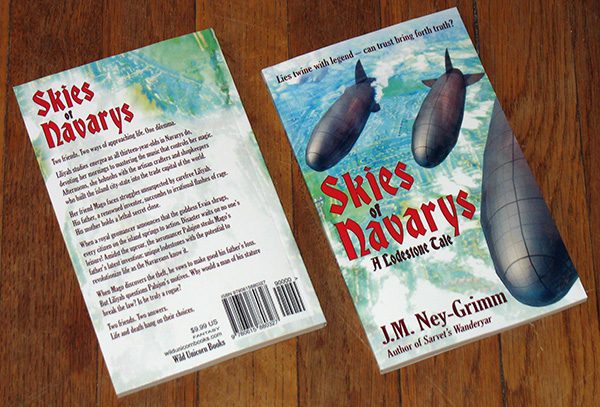I stumbled across this and loved it! Naturally, I had to share. Enjoy!
http://youtu.be/B2Nz2LPnNq8
😀

Last year I shared my adventures wrapping gifts with bandannas. Bandannas remain part of my repertoire, as do purchased cloth bags and larger swatches of cloth that I give neat edges with pinking shears.
But all of those options stem from the Japanese furoshiki or “bath spread.”
They first came into use in the Nara Era to bundle one’s clothes while bathing in the public baths. The technique was borrowed by merchants as a convenient way to transport their wares. And then the furoshiki became a decorative covering for a gift.
Modern-day Japan is reviving the furoshiki.
This video shows two ways to tie a furoshiki. The first is new to me! I’m tempted to re-wrap some of my already wrapped presents, because it looks so cool. 😀
http://youtu.be/6fhPumcPla0
Here’s a few more furoshiki techniques.
And one more video:
Have fun with it!
For more green living tips:
Great Soap & Etcetera Quest
Green Housekeeping
Bandanna Gift Wrap
Twelve dancing princesses in the fairy tale of that name descend a secret stair – not dancing while descending, however 😀 – and pass through three magical woods. Depending on the version in your book, the first glade of trees features leaves of bright copper, the second, flowers of shining silver, and the third, fruits of gleaming gold.
Fifty princes have sought to learn the princesses’ secret and failed.
When a modest gardener boy takes up the quest, he secures an advantage: a cloak of invisibility. Hidden by its powers, he follows the princesses to their midnight revels.
As proof of his journey, when he returns from the underworld, he breaks a twig from a tree in the copper wood.
This branch in my own garden reminds me of the gardener boy’s earliest prize.

For more photos:
Tree Rocket
Blossom
Mira’s Corner is a nifty little blog chronicling the adventures of the inner journey and the many ways the inner world dovetails with the outer.
So why am I telling you about Mira’s Corner? (Beside the fact that it’s cool!)
Because Mira kindly hosted a guest post of mine last May, and I suspect many of my newest readers have never seen it. Now’s your chance, because I’m reproducing it here. 😀
Edited to add: I just tested the links to Mira’s blog and discovered that it is now a private site, not open to the public. She’s a neat lady who comments occasionally on The Passive Voice. Perhaps you can catch up with her there.
Mira let me know that memoir and humor are appropriate topics for her Corner. So I’m “speaking” as a raconteur, although my humor tends toward dry and understated, rather than laugh-out-loud. I bring with me a tale of big-city misadventure (sort of!) married to its alter ego, pastoral steampunk fantasy.
How, you may ask, do urban high jinx tango with bucolic shenanigans? Not an obvious mix!
I will tell you.
It becomes more comprehensible, if you understand that:
1) my tale touches both my real-world history as a would-have-been grad student and my fantasy novel, Troll-magic; and
2) it involves neither city streets nor woodland groves, but a bedroom in darkness and a stranger.
Have I got you interested yet? Grin!
 I was twenty-three, proudly sporting an architecture degree, and looking to make a career switch to psychology. I know—pretty strange; an unpleasant encounter with a nude pin-up poster in the all-male architecture firm where I worked one summer re-routed my destiny.
I was twenty-three, proudly sporting an architecture degree, and looking to make a career switch to psychology. I know—pretty strange; an unpleasant encounter with a nude pin-up poster in the all-male architecture firm where I worked one summer re-routed my destiny.
I applied to clinical psych programs (where the profs found my architecture education hard to swallow). Rutgers invited me to interview. I was thrilled. An interview at a tough program means you have a chance of being accepted.
I burbled the good news to all my acquaintance, including the master of the dojo where I studied martial arts.
He said: “Rutgers is just across the river from New York City! You have to visit Eamon!”
Eamon (name changed to protect the . . . almost innocent) was my teacher’s teacher. He’d traveled to Okinawa, Japan, the origin point for the martial art we practiced, in his dedication to become great. He headed up his own dojo in New York. Naturally, I must take a lesson from my master’s master.
“He’s got an apartment right there in the city,” declared my teacher. “He’ll be delighted to put you up!”
The arrangements were simple. My teacher phoned his teacher. I participated in a follow-on conversation to learn details for driving and parking (both challenging elements of the Big Apple). All was set.
When the day of my interview arrived, I left Virginia before dawn, arrived at Rutgers in plenty of time, and participated in a completely boring dialog with my interviewer. She asked only the predictable questions. Why are you leaving architecture for psychology? Are you crazy? (Well, no, she didn’t ask that, but you get the idea!)
 My more interesting conversation took place after an accidental encounter in the hall. I have neither memory nor idea of how I wound up talking with a psych professor who was not (alas) in the clinical program, but I’ll always remember what we talked about.
My more interesting conversation took place after an accidental encounter in the hall. I have neither memory nor idea of how I wound up talking with a psych professor who was not (alas) in the clinical program, but I’ll always remember what we talked about.
I’d been wondering how a person’s will to do something was translated at its most basic level from intention into action.
When I’m sipping tea (my beverage of choice) and I form the intention to bring the mug to my lips, what is it that bridges the gap between “I will do this” and actually doing it? I suspect that’s an unanswerable mystery, the same sort of question as “what is the meaning of life?” or “what came before the Big Bang?”
But it turned out this professor had been wondering the same thing! We had a great discussion. And I like to think he put in a good word for me when the admissions committee reviewed all the applicants for the final cut. (No, I never did make it to graduate school, but that’s another story!)
So what does all this have to do with the city and dark bedrooms? Well, it doesn’t. Mere prelude. 😀 Now I’ll get on to the meat of my tale.
I drove into New York utilizing the precepts culled from my big city acquaintance: floor the accelerator as soon as the light turns green and whenever there’s clear space in the lane ahead. It worked well for me as a new adult.
Adrenaline spike and elevated heartbeat? Pure amusement park fare.
I survived and arrived.
There must have been dinner in there somewhere, but my memory skips to the class in Eamon’s dojo.
Honestly, it was just like class in my own teacher’s dojo: same routines, same exercises, same types of feedback. Intriguing to meet different personalities in the students and the teacher, sure, but hardly worth heading into NYC rather than home.
One sole difference stood out. In Virginia, class started at 7 p.m. and finished at 9:30 p.m. In New York, class started at 9 p.m. and ended shortly before midnight! Late city hours. Eamon’s day wasn’t done even then.
 He ushered me into his apartment, showed me the guest room that would be mine, bade me goodnight, and departed to the rest of his evening. Okay.
He ushered me into his apartment, showed me the guest room that would be mine, bade me goodnight, and departed to the rest of his evening. Okay.
I showered, grabbed PJ’s, read a little to unwind, turned out the light, and went to sleep. We’re finally getting to that dark bedroom!
I roused some time later to feel the far side of the bed dipping as someone climbed in.
I froze, even as my heart started to hammer.
I suppose he wasn’t a complete stranger. I knew it was Eamon, who I’d first met that day. But what on earth was I supposed to do? He was a fifty-gazillion black belt, and I was utterly alone in a big city where I knew no one.
I froze, and I stayed frozen. Waiting to see what would happen next.
What did happen?
Utterly nothing!
Eamon settled in on his side of the bed, never getting anywhere near me. (The bed was immense, bigger than a king.) He never spoke. I didn’t either. I don’t know how long I lay there in fear, waiting, waiting . . . but eventually I fell asleep.
In the morning, Eamon was gone—gone from the bedroom, gone from the apartment. I dressed, quickly packed, summoned my car from the garage, and drove all the way back to Virginia.
I don’t know why Eamon didn’t explain that his apartment possessed only one bedroom. (He didn’t give me a tour, and the layout wasn’t obvious, so I hadn’t guessed it on my own.) Why didn’t he offer me the living room couch? Or take it himself, if he felt inclined toward graciousness?
I never told anyone what had happened. I’d taken no harm. That was enough.
But when I wrote Troll-magic and arrived at the moment where Lorelin awakens in darkness, in the bedroom of an enchanted underground palace, to feel some stranger climbing in on the opposite side of the bed . . . well!
The the scene almost wrote itself. I’d lived it, after all!
Have you ever experienced what should have been danger, but (miraculously) wasn’t? Did you wish you’d handled it differently? Or were you satisfied with your choices? I remain befuddled by my own pseudo-escape. To this day, thirty years later, I’m not quite sure what to make of my NYC adventure. But I loved putting the scene into my story!
Troll-magic is available as an ebook.
Amazon I B&N I iTunes I Kobo I OverDrive I Smashwords
 Or available as a trade paperback from:
Or available as a trade paperback from:
Amazon I B&N I Book Depository I Fishpond
Mysterious Galaxy Books I Powell’s Books
Or you may order it from your local bookstore!
ISBN-10: 1977600166
ISBN-13: 978-1977600165
For more about Troll-magic, see:
Bazinthiad’s Fashions
Magic in the North-lands
Radices and Arcs
Character Interview: Lorelin
What Happened to Bazel?
For more author memoir, see:
Waterfall and Fairytale
Writer’s Journey
Devouring Light started from the idea of spectacle. Somebody – Mercurio – was creating a grand display involving the constellations. Draco, the dragon. Ursa Major, the great bear. And so on.
But what would this spectacle celebrate?
No mystery there. That was part of my initial inspiration as well: our sun’s birthday.
The next question was trickier. How would our sun – Sol – mark his birthday?
Possibly he did so in Earth years. Earth being the only planet in the solar system with humans on it lends these “Gaian” years a certain distinction.
But the universe of Devouring Light features many other beings: the spirits of stars, those of comets – all the celestial bodies of the cosmos, in fact.
And Sol is so very old when measured in Earth’s years. Using them as birth markers would be like humans using seconds.
My decision: Sol wouldn’t use the movements of anything within his own system to signify his anniversary. What about outside the solar system?
Posing that question yielded an immediate answer. Or, rather, another question which generates its own prompt answer.
What does the sun revolve around?
Our galaxy, of course.
There was Sol’s “year.” The time it takes for him to travel once around the Milky Way.
And how long is that? In Earth years? Being human myself, not celestial, I think in terms of Earth. And I had some research to do.
We know the age of our sun: 4.6 billion Earth years. An odd measure, when you consider that Earth herself was likely still a part of the dust cloud around Sol when he ignited. But that is how we measure long spans of time.
Our knowledge of the number of times that Sol has swung around the galaxy center is less precise. One circuit requires between 225 and 250 million Earth years. Sol has made the trip anywhere between 20 and 25 times.
Since I envisioned Sol as a fully grown “young man,” not a youth barely emerged from his teens, I chose the longer figure.
Sol was turning 25. Excellent!
With this important question answered 😀 , I could call this blog post complete. But you know I’m not going to do that! In the course of my solar research, I learned a bunch of cool things about our sun. And, while I’m perfectly capable of sharing them all with you, I won’t do that either.
Instead I’ll tell you the one cool thing that was utterly new to me and that proved to be important to my story.
The heliopause.
What, you may ask, is the heliopause.
I certainly didn’t know what it meant when I first encountered the term.
It has to do with the solar wind.
Now, I’d heard of the solar wind, and I thought I knew what it was. But I didn’t. Not really.
Because the solar wind is plasma.
What? Plasma? I thought plasma existed only in conditions of great heat and pressure. Like in the body of a star.
Well, that is a common place to find it. Although it also occurs in the instant of a lightning strike.
But what plasma is . . . is a mass of ions. That is, atoms stripped of their electrons, so that the electrons swirl through the plasma solo with their negative charge, while the nuclei – protons bound with neutrons – also swirl through the plasma with their positive charge.
And the solar wind is this plasma hurled off the surface of the sun and out into space.
Wow!
Obviously, the solar wind is very “thin,” with only a few particles within a lot of vacuum. Almost like a vapor or a gas. But it’s plasma, not a gas, because the particles have a charge. And it packs some punch. Think of the solar yachts posited in SF stories, with sails catching the solar wind.
Luckily, because the plasma particles have a charge, they get bounced by Earth’s magnetosphere. But that’s another topic! Maybe a future blog post? 😉
So . . . the heliopause.
The solar wind blows a long, long way. All the way past Pluto to nearly 100 astronomical units (100 AU).
To refresh your memory, one AU is the distance from the sun to Earth.
At 100 AU from our sun, the solar wind runs out of steam and ends, contained by the pressure of the interstellar medium and the stellar winds that roam the galaxy.
The bubble created by the solar wind is known as the heliosphere. It has a ripple in it, shaped like a pinwheel or a ballerina’s swirling skirt. It’s caused by our sun’s spinning magnetic field. And the heliosphere has turbulence at its edge, where the stellar winds press inward, while the solar wind presses out.
That area of turbulence is known as the heliosheath. And the great curve where the turbulence ends, the solar wind ceasing completely, is the heliopause.
Why did I care?
Because my dragon constellation, Draco, does some “flying” at the heliopause. I needed to know what he’d encounter there!
Not being a scholar, Draco calls the entire end zone the heliopause, rather than using the precise terms: termination shock, slow-down region, stagnation region, and depletion region. But his wings feel the strain of the turbulence regardless!
For more about the world of Devouring Light, see:
The Celestial Spheres of Sol
What Do Celestials Wear?
The Graces
Roman Dining
The Oort Cloud
Mercury the Planet
Draco the Dragon
The Simiae
For more about our sun, see:
Sol
Are you an Indie author?
Do you write science fiction or fantasy?
Do you want to expand your audience of readers?
D.J. Gelner and I are creating an anthology of science fiction and fantasy stories for release this spring.
The idea is that some of his readers will become my readers. And some of my readers will become his readers.
And some of our readers will become your readers!
D.J. writes powerful, dramatic stories with “gotcha” kickers at the end. I write epic fantasy in which the stakes are high and my protag’s personal world is reshaped whether victory or defeat transpires.
I know my fellow Indies create some pretty amazing stuff, too!
Here’s a summary of our anthology project:
Genre: science fiction and fantasy
Theme: zoo
Use this as a writing prompt – your story doesn’t have to be set in a zoo or even to have to do with animals. Think of “zoo” as a springboard to get you started, not as a rigid limit. We welcome extremely creative submissions!
Number of Stories: We’re shooting for 10-15, but we are flexible. We will not omit a story, if we think it fits – if your story doesn’t, we encourage you to indie publish it!
Word Count: up to 9,000 words per story
Submission Deadline: January 31, 2014
Interested?
I’m really excited about this project, and I hope you will be, too!
Email us at zooSFFanthology (at) gmail (dot) com for more information.
D.J. and I look forward to hearing from you!
Update: January 31 has come and gone, and D.J. and I have received an in-box full of great stories! As I write this note, we’re reading and enjoying. Soon we’ll begin chosing exactly which stories to include in the anthology. I’ll keep you posted – with more updates – as we make progress. 😀
Update 2: Quantum Zoo released June 14, 2014 with a great splash! Many, many readers bought it and the positive reviews started pouring in. A common theme in those reviews: “I don’t usually like short story collections, but this one is great!” The anthology continues to sell steadily, carrying the names of the contributing writers to ever more readers. It’s done better than I believed was possible. After all, this whole project was an experiment. I’m calling it a success.
For more about Quantum Zoo:
Pin Board for Quantum Zoo
Quantum Zoo: “A King in Exile”
Launch Day: Quantum Zoo
Quantum Zoo: “Skipdrive”
Quantum Zoo Party!
Quantum Zoo: “Demon Rising”
Quantum Zoo in Paperback!
When Mercurio throws a banquet in my novella, Devouring Light, his guests dine Roman style.
I’d always envisioned the ancient Romans as reclining while dining, propped up on couches with low tripod tables at their elbows. But when it was time for me to write the feast scene, I needed details. So I dove into research!
And discovered that my vision was somewhat mistaken!
The video below is what I’d imagined.
Certainly there are museums with replicas that look somewhat like that. One even features the individual tables I’d envisioned. While that may be accurate for meals with three people only, the scene looked rather different when more people were gathered.
Before we go further, let’s note two terms.
A klinē is a sort of slanting couch, with the foot ten degrees lower than its head.
A triclinium, the ancient Roman dining room, meant “three klinai” or “three couches.”
The houses of the ancient Romans usually had at least two triclinia. Elite households might feature four in a triclinium maius .
But, here’s the thing that confused me.
The ancient Romans commonly invited between nine and twenty guests to their feasts.
How on earth would they squish three reclining diners on each of those narrow couches? They would have to sit, not recline. And I knew they didn’t. Or I thought they didn’t.
Once I’d located some more scholarly works, I discovered there was more variation among Roman dining styles than I’d supposed. Specifically, the ancient Romans were people with individual habits, just as you and I have our own idiosyncrasies.
Sure, the reclining habit was a mark of status. Undoubtedly, most eaters started off that way, just to show they could.
“Yes, I’m rich and privileged. See!”
But what about the child who couldn’t lie still? Or the lady with a bad back? Or the senator with a dyspeptic stomach?
Well, the likelihood that people shifted their position a fair bit while eating was only common sense.
But it still didn’t explain how they fit three reclining diners on those couches.
Finally I found another visual, and it all made sense.
Aha! The head of the couch pointed toward the table, and the foot of the couch pointed away. Those klinai for three people were much bigger than those for a solo diner.
I couldn’t find an image in the pubic domain that I am free to post here. But check this link, if you want to see the visual for yourself.
Mercurio gives each of his guests a unique klinē garnished with flowers, rather than grouping them on shared couches. The major “celestials” in Devouring Light happen to number eighteen, perfect to exactly fill two triclinia. How convenient!
This was Mercurio’s seating plan for them until . . . he realized he needed to accommodate an unexpected guest!

For more about the world of Devouring Light, see:
The Celestial Spheres of Sol
What Do Celestials Wear?
The Graces
The Heliosphere
The Oort Cloud
Mercury the Planet
Draco the Dragon
The Simiae
 My newest work, Devouring Light, will release soon. I’m excited! Eager to make the story available for readers!
My newest work, Devouring Light, will release soon. I’m excited! Eager to make the story available for readers!
To tide myself over until the release – and because I can’t resist – I’m sharing some of the tidbits I’ve learned while doing research for the book.
This week, I’m talking about the Graces of ancient Greece.
And why am I presenting the Graces? Because they were the archetypes I drew on when dreaming up Lixy’s handmaidens.
“Who is Lixy?” you ask.
The beautiful celestial wanderer who fetches up at the domicile of Mercurio, my protagonist. Lixy is lovely, mysterious, and utterly lost – both in memory and in space. She doesn’t know who she is or where she came from. Quite the intriguing puzzle for Mercurio, who gives her shelter.
Lixy does remember her handmaidens, especially Eupheme, her nurse when Lixy was young.
So what about the Graces?
They were female spirits personifying the feminine attributes of grace. The most famous, the “Three Graces,” were Splendor (Aglaea), Mirth (Euphrosyne), and Good Cheer (Thalia).
But there were also “lesser” Graces. These were the ones who caught my attention. So who were they?
Philophrosyne personified welcome, friendliness, and kindness. Her name means “friendly-minded,” and I envision her as a spirit of hospitality. She became a cupbearer in Lixy’s home star system. Cupbearers in ancient times were particularly honored, since they ensured that the food and drink of a ruler was pure and unpoisoned. Hebe and Ganymede, cupbearers in Greek mythology, took that role in the solar system (ours) where Devouring Light takes place.
Eupheme personified words of good omen, praise, acclaim, shouts of triumph, and applause. Wow! She sure appealed to me! And I could see why Lixy remembered her. Who wouldn’t remember the person who steadfastly offered genuine and enthusiastic praise? Her name means “well-spoken,” and she was nursemaid to the Muses of Greek Mythology. It seemed appropriate that my Eupheme served as Lixy’s childhood nurse.
 Euthenia personified prosperity, abundance, and plenty. Her name means “well-being.” Like her sisters, she was believed to be the daughter of Hephaestus and Aglaea. I envision the Euthenia of Devouring Light as possessing healing skills.
Euthenia personified prosperity, abundance, and plenty. Her name means “well-being.” Like her sisters, she was believed to be the daughter of Hephaestus and Aglaea. I envision the Euthenia of Devouring Light as possessing healing skills.
Eucleia personified glory and good repute. In Greek mythology, she served as Aphrodite’s handmaiden and was also associated with Artemis. She represented the loveliness of the bride approaching her wedding. I imagine the Eucleia of my story as modeling and encouraging integrity in Lixy. Her name means “renowned” or “celebrated.”
I’m almost tempted to write a story in which these four Graces get some “stage time,” rather than serving as a part of Lixy’s background!
For more about the world of Devouring Light, see:
The Celestial Spheres of Sol
What Do Celestials Wear?
Roman Dining
The Heliosphere
The Oort Cloud
Mercury the Planet
Draco the Dragon
The Simiae
This feels like a good week for a story opening. It follows!
One minute it was hot terror and noise – the creature’s roaring – and the sick sweet smell of blood.
The next, James thrust her through the portal into water and the strange rippling quiet of water-plugged ears. She’d swallowed the small of mouthful of bitter brine forced through her lips in the abrupt transition and kicked out, grateful for the lungful of air she’d brought with her.
Sunlight filtered down through cool turquoise liquid and fronds waving from the vast columns of a kelp forest. The slippery brush of fish tickled her shoulders as she stroked forward through a school of goatfins.
She was counting: two massive pillars of leafy green on the right, bend around one on the left, then another straight ahead. Her lungs were starting to ache. I can do this, she reminded herself. I’ve done it before.
One breath was enough.
Enough for her, that is. Sam could swim; liked to swim. But there was a reason beyond the inconvenience of getting wet on their way to the dig that her cohort of XT archaeologists took the longer route through three portals to get to Eridani Four.
She kicked around the last column of kelp and angled downward, down along a coral bluff toward the cave that . . . wasn’t there. Shit!
She drifted one heartbeat in stunned amazement, then curled to let her feet swing around and push off the rough cliff face, propelling her back the way she’d come.
Jesu-Yosef-Marie! How could it be gone?
And how could she be swimming back toward the cavern she’d just left? The others would be gone. James too. Before her head followed the rest of her through the water portal, she’d seen him scramble under the creature’s rusty fangs, snatching Nonsin from the rocky floor as he dove for the other portal.
But she needed air. Even she couldn’t go for much more than half a minute.
She stroked steadily, ignoring the growing ache in her lungs, counting again. One straight ahead, one on her right, two on her left. Shit!
Shit, shit, shit!
The bluff on this side of the underwater ravine . . . wasn’t. No bluff, no hollow in the coral, no portal. The ache in her lungs shaded into pain. Cristos! In another heartbeat she’d gulp water, convinced it was air, anything to feed her screaming need to breathe.
She kicked again. I won’t breathe. I’ll swim. And swim and swim. Her eyes began to burn from the salt. Or was she crying? How could you tell underwater?
Pull, kick, glide. She could hear her old swim teacher in her head. “Glide, Samantha, glide!”
A shadow darkened the water around her.
What?
She looked up. Blessed Marie, yes! An outcropping of coral loomed over her with a dimple on its belly and a swirl of rainbow dust in the dimple: a portal. An unmapped one.
She kicked upward frantically, fighting her body’s imperative to inhale.
Just. One. More. Kick.
And she was through. But where? And into what?
For more science fiction samples, see:
Dragon’s Tooth
Dream Trap
For a fantasy sample, see:
The Green Knight
Get it, because you like full bookshelves. Get it, because you enjoy a stylish book on your coffee table. Get it to read. Get it to give as a gift. (Grin!) The trade paperback edition of Skies of Navarys is here!

Two friends. Two ways of approaching life. One dilemma.
Liliyah studies energea as all thirteen-year-olds in Navarys do, devoting her mornings to mastering the music that controls her magic. Afternoons, she hobnobs with the artisan crafters and shopkeepers who built the island city-state into the trade capital of the world.
Her friend Mago faces struggles unsuspected by carefree Liliyah. His father, a renowned inventor, succombs to irrational flashes of rage. His mother holds a lethal secret close.
When a royal geomancer announces that the goddess Evaia shrugs, every citizen on the island springs to action. Disaster waits on no one’s leisure! Amidst the uproar, the aeromancer Palujon steals Mago’s father’s latest invention: unique lodestones with the potential to revolutionize life as the Navareans know it.
Mago discovers the theft and vows to make good his father’s loss. But Liliyah questions Palujon’s motives. Why would a man of his stature break the law? Is he truly a rogue?
Two friends. Two answers. Life and death hang on their choices.
Here are the “stats” for the trade paperback:
5″x 8″ trim size • 116 pages
ISBN-10: 0615880320
ISBN-13: 978-0615880327
Amazon.com I Amazon UK I B&N I CreateSpace
Skies of Navarys is also available as an ebook in electronic bookstores.
Amazon.com I Amazon UK
B&N I Diesel I iTunes I Kobo I Smashwords I Sony